Eviction Prevention After the Moratoriums
Pittsburgh had a brief period of stronger tenant protections during the pandemic. Can we make them last?

Although renters have started to recover from the economic instability of the pandemic, a significant number are still at risk of losing their homes.
Seventeen percent of renters, or ten million American adults, missed a rent payment as of February, 2022. Seven percent, or 4 million adults, are facing a likely eviction.
What do we risk if we allow these people to lose their homes?
Tenants face an increased risk of homelessness and illness following an eviction.
In the two years after a filing, an eviction causes:

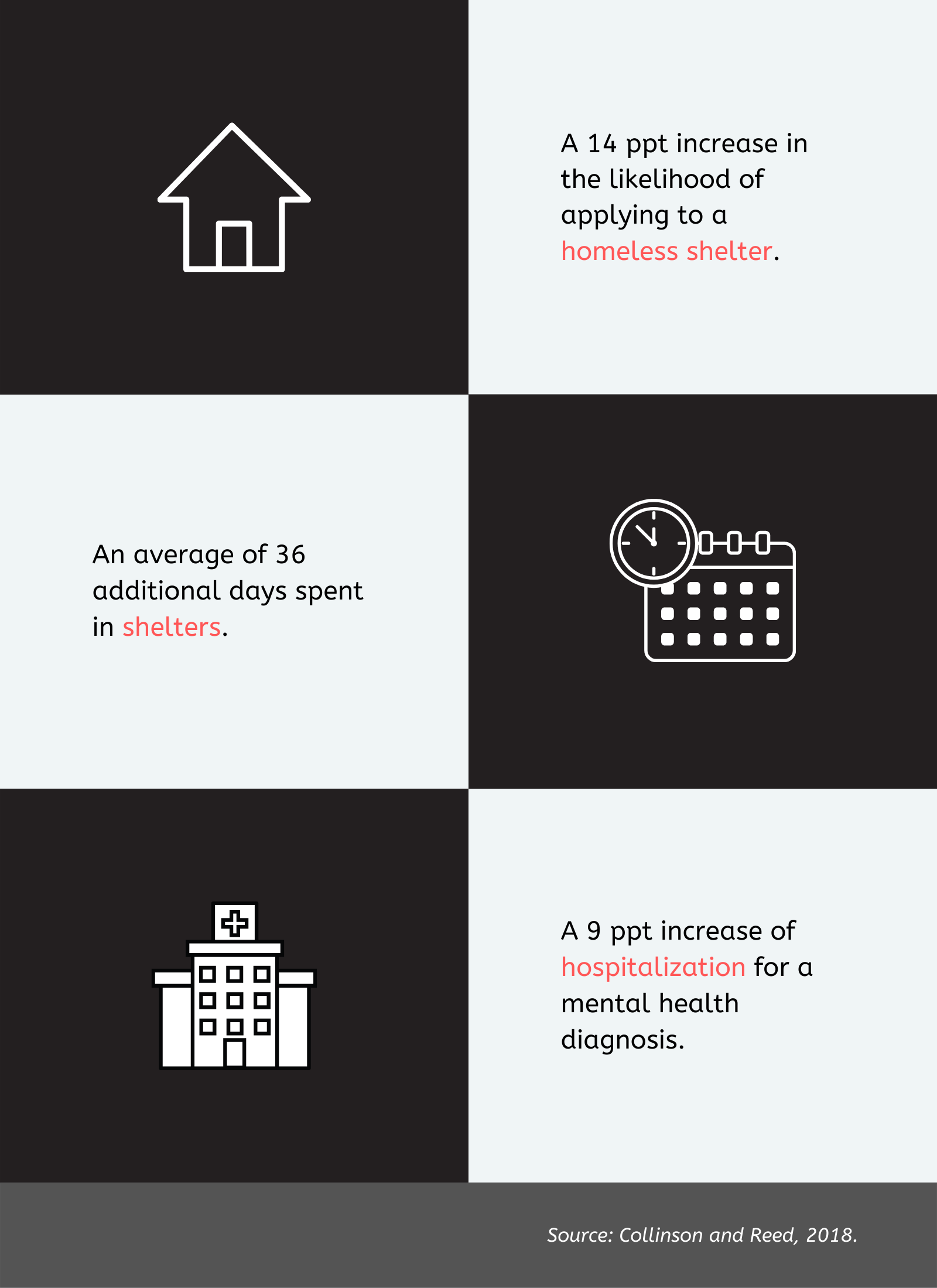
An eviction filing can have a pronounced effect on a tenant's life regardless of whether an eviction actually occurs. Even in cases where the landlord withdraws, eviction filings remain in the public record and may prevent a tenant from finding housing in the future.
The incidence of eviction by race and gender is further cause for concern.
Eviction disproportionately affects Black renters, exacerbating racial disparities.

There are 40 Black renters for every 100 white renters.
But among eviction filings, there are 80 Black defendants for every 100 white defendants.
Source: The Eviction Lab
This gap shows that eviction affects Black renters at double the rate of white renters. Disparities in eviction filings exist for women too, especially Black women.
Re-imagining our response to missed rent is vital. With stronger tenant protections, we can build communities where our neighbors don't lose their homes and health to eviction.
Policymakers met the threat of mass evictions during the pandemic with sweeping changes that made a big difference for Pittsburghers.

This included $80 million in federal funding for emergency rental assistance to tenants in Allegheny County and Pittsburgh.
Eviction moratoriums filled in the gaps as the distribution of funds to tenants got off the ground.
Congress passed a federal eviction moratorium with the CARES Act in March 2020. The initial moratorium only applied to properties receiving federal assistance or federally-backed financing, less than half of rental units in the US. Even so, it was hugely successful in preventing evictions. Pittsburgh saw weeks with zero eviction filings under CARES.
The CDC enacted a much broader moratorium in September 2020. Any renter meeting the eligibility criteria - for instance, loss of income due to the pandemic - could claim a right to protection under the order. Despite the broader scope of this new moratorium, eviction filings in Allegheny County were above CARES levels, potentially because of uncertainty about the CDC's authority to give such an order. The moratorium was ultimately extended for 11 months until it was struck down by the Supreme Court in August 2021.
Magisterial District Courts in Pittsburgh received an order from Judge Kim Berkeley Clark in August 2021 that changed the rules for eviction cases again. The order allowed tenants who applied for emergency rental assistance to request that their eviction cases be deferred while applications were processed. Weekly filings continued to trend upwards towards historical averages during this period. Judge Clark's order expired in November 2021.
In 2022, no moratoriums remain in place for Pittsburgh and emergency rental assistance distribution is winding down. Filings continue to trend upwards towards historical averages.
We can build better housing policy for the long-term, not just the pandemic era.
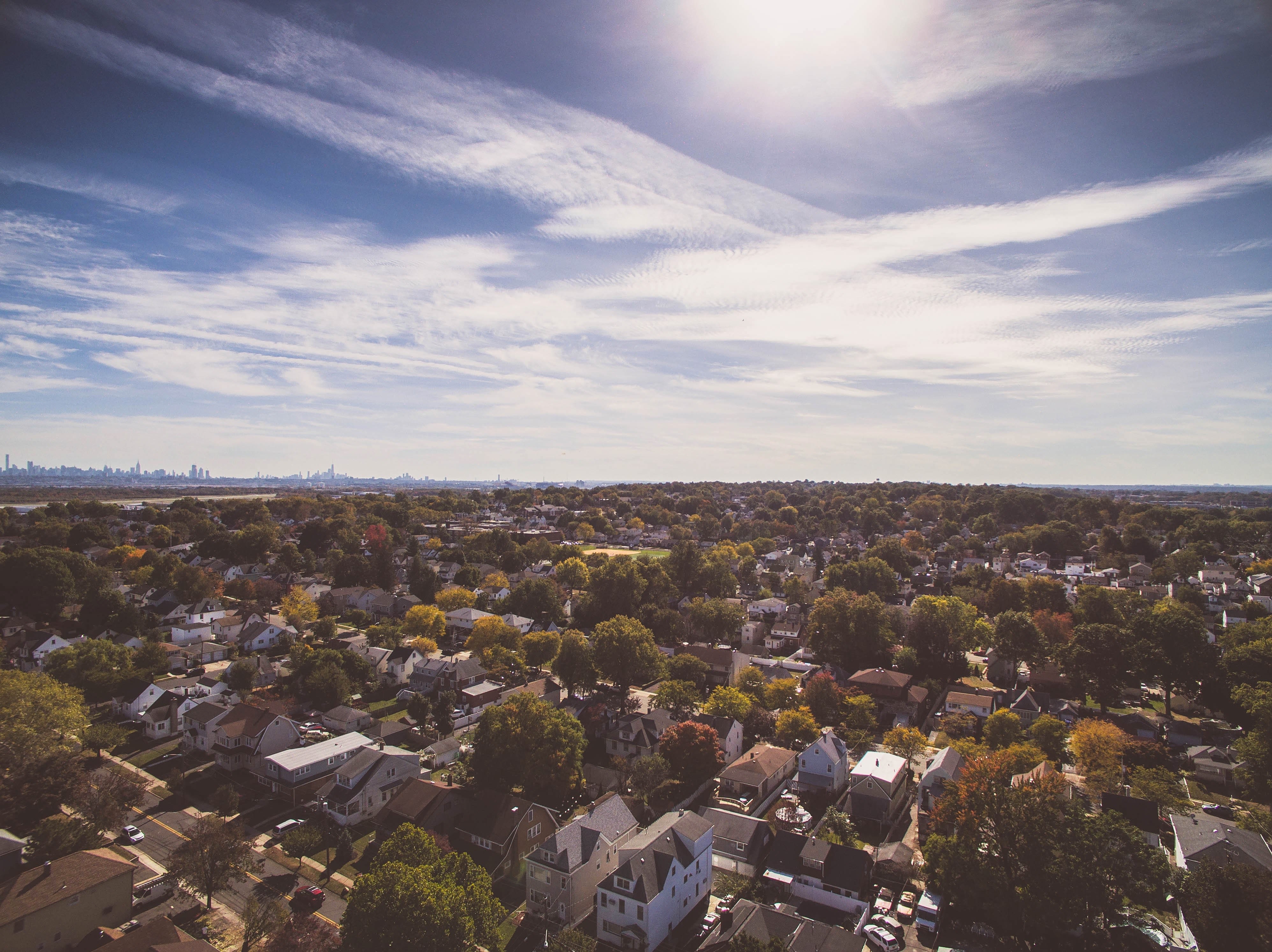
Since the moratoriums have expired, local governments across the country have proposed legislation to expand eviction prevention efforts. These include expanded access to legal representation for tenants, record sealing, and landlord-tenant mediation. None of these policies currently exist in Pittsburgh. They could use your support.
In the meantime, these resources can help if you or a neighbor are facing an eviction:
Rent Help PGH
Get help with connecting to rent relief, community support, and understanding the legal process.
Call (412) 534-6600 for English
Or (412) 530-5244 en Espagnol
Emergency Rental Assistance Program
Or complete an application over the phone at (412) 248-0021.
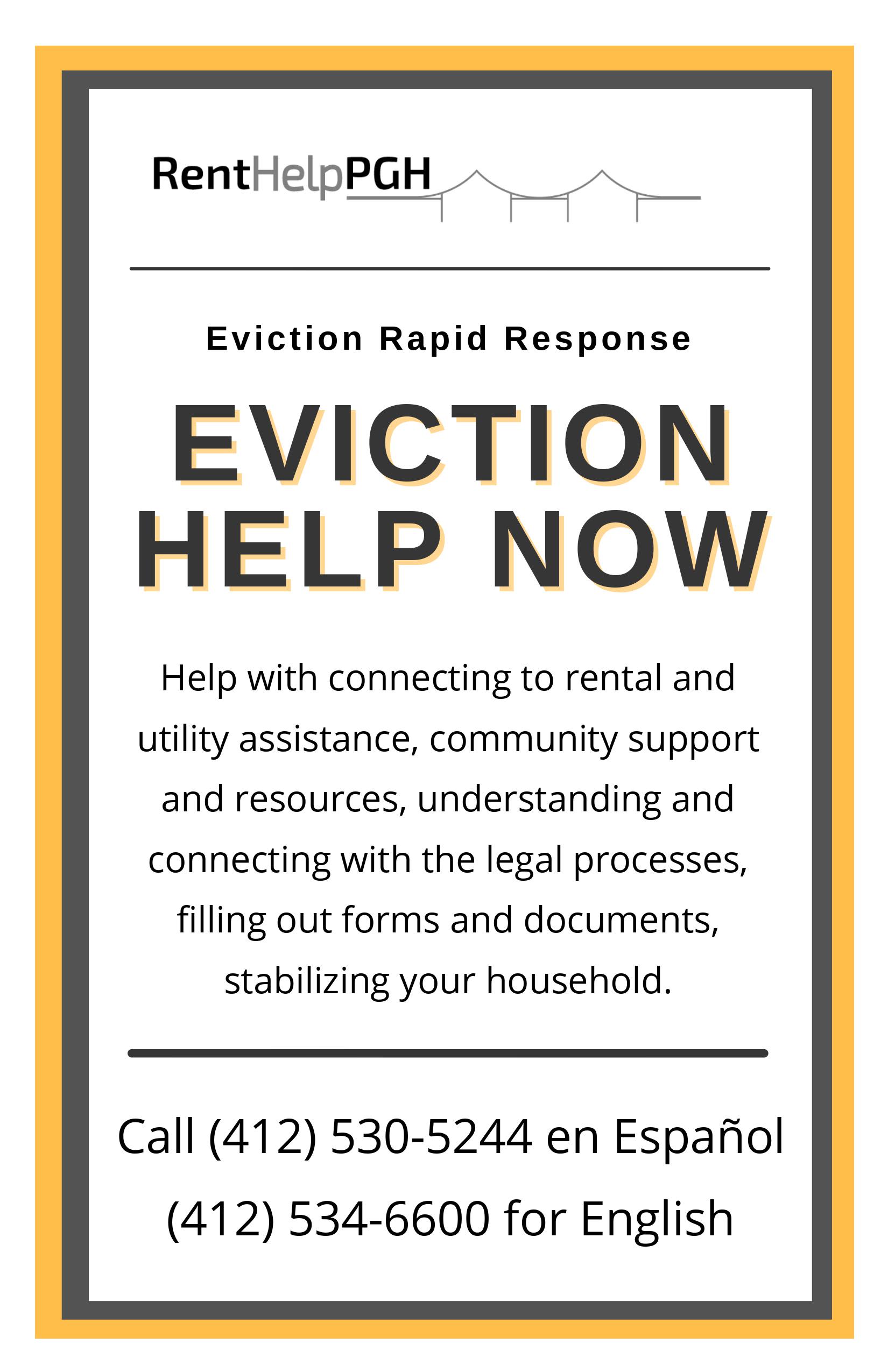
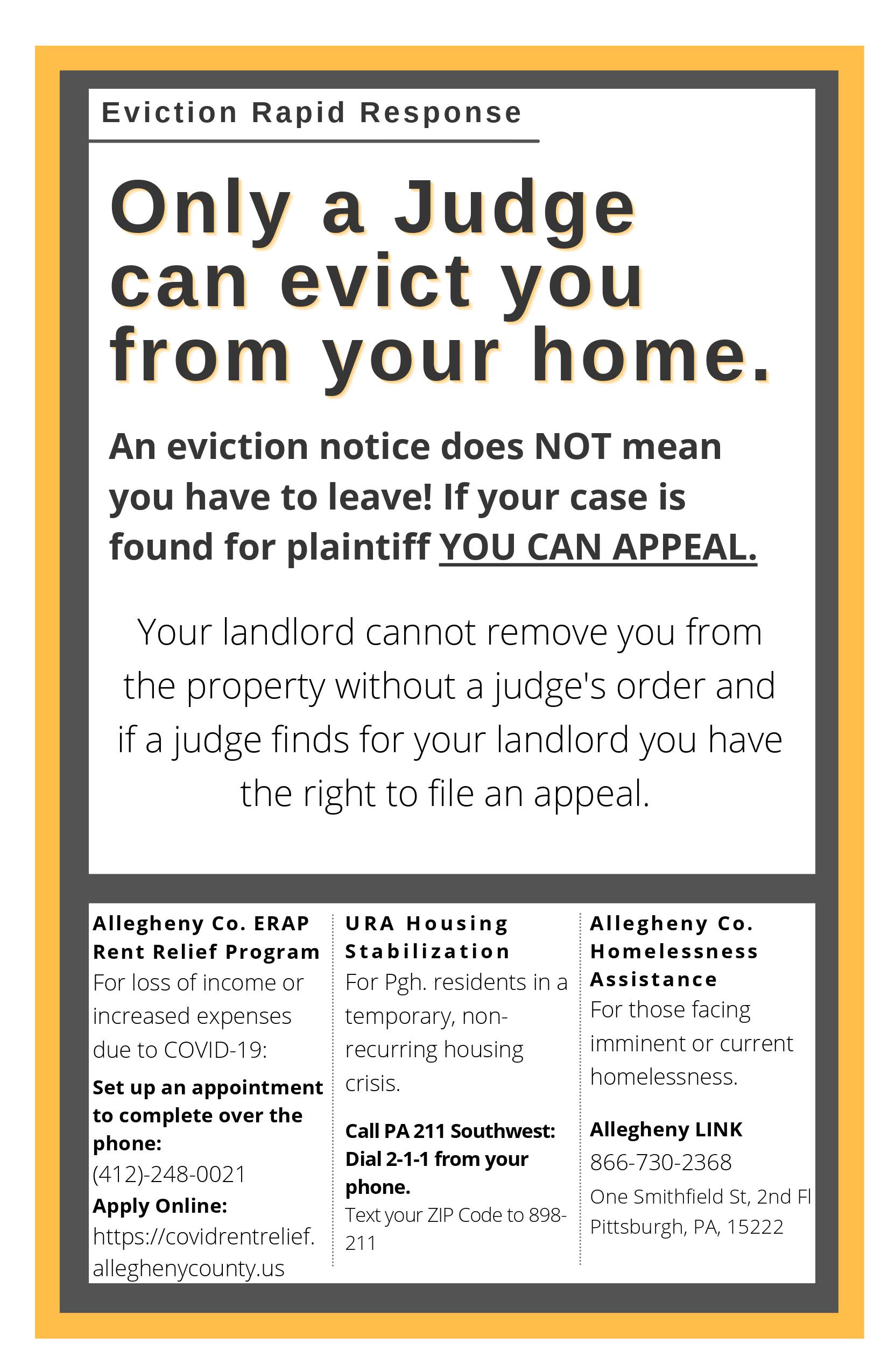
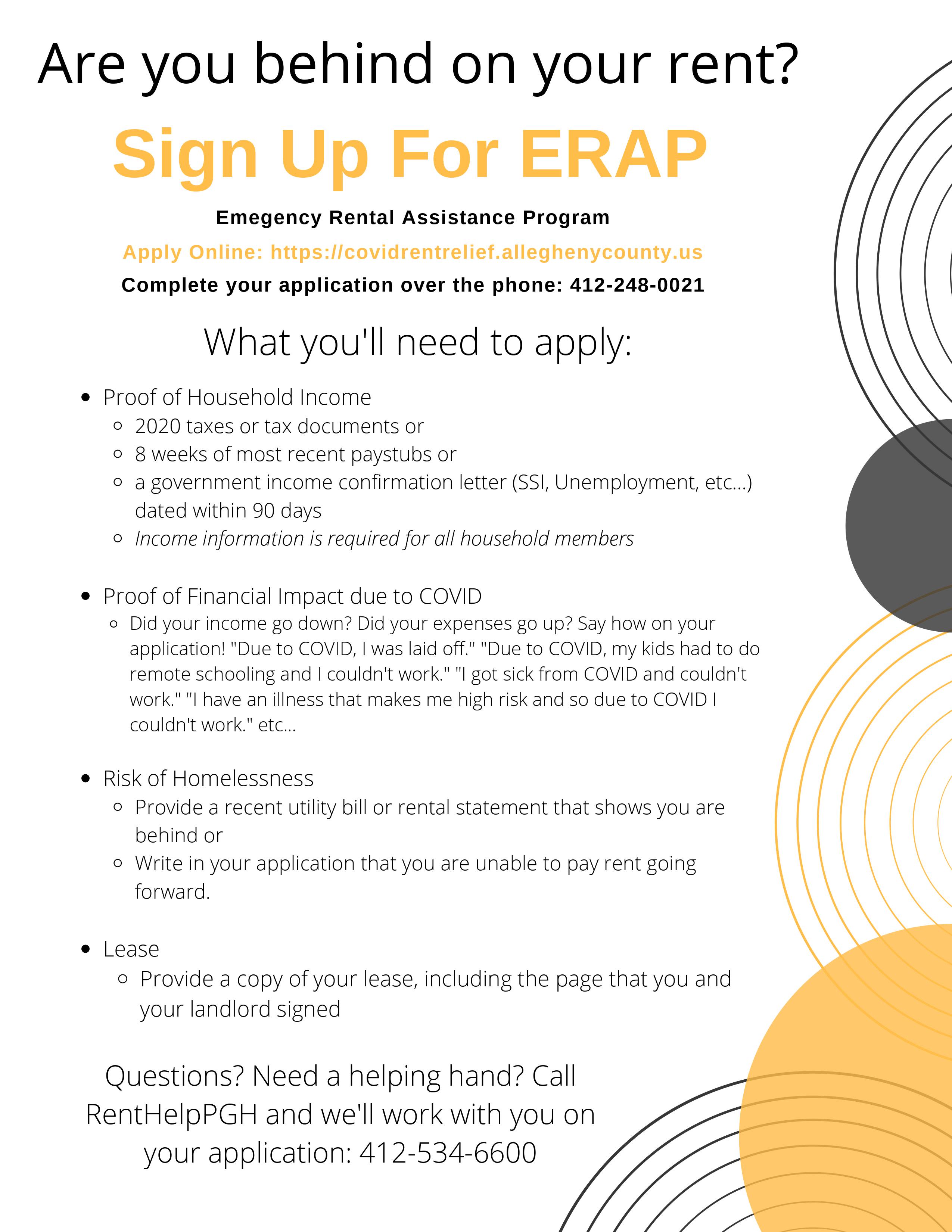
Fliers shared courtesy of Rent Help PGH.
References:
1. Assis, B. Aerial photography of rural. (2018). https://unsplash.com/photos/r3WAWU5Fi5Q
2. Collinson, R., & Reed, D. (2018). The effects of evictions on low-income households. Unpublished Manuscript.[Google Scholar], 1-82.
3. Donders, M. Aerial photography of houses near trees. (2017). https://unsplash.com/photos/boz4mBOeR2U
4. Hepburn, P., Louis, R., & Desmond, M. (2020). Racial and Gender Disparities among Evicted Americans. The Eviction Lab. https://evictionlab.org/demographics-of-eviction/
5. Hill, S. Downloading the Census Household Pulse Survey in R. (2021). https://www.sophie-e-hill.com/post/2021-09-12-downloading-the-census-household-pulse-survey-in-r/
6. Johnson, N. Aerial photography of houses during daytime. (2019). https://unsplash.com/photos/ddK3u7QVWJQ
7. Moloney, M. White wooden window frame on white wooden wall. (2021). https://unsplash.com/photos/tccTcNPdkNA
8. The Eviction Lab. Eviction Tracking: Pittsburgh, Pennsylvania [Data set]. https://evictionlab.org/eviction-tracking/pittsburgh-pa/
9. United States Census Bureau. Household Pulse Survey [Data set]. https://www.census.gov/programs-surveys/household-pulse-survey.html
10. Waxman, A. Aerial view of house village. (2019). https://unsplash.com/photos/ZdtOy25eNn4
